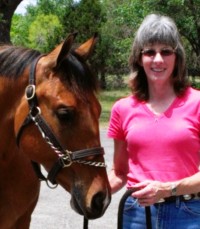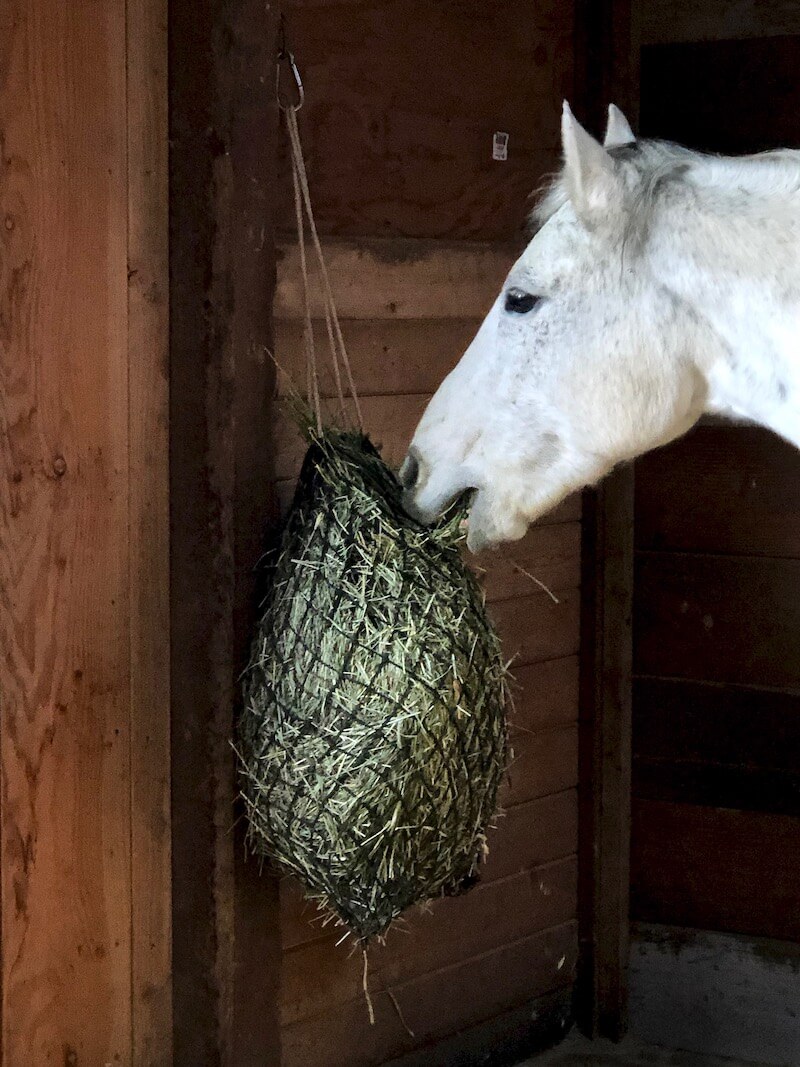Horse Digestive System Designed for Continuous Forage
by Eleanor Blazer
Why is the small intestine 60 feet in length and the large intestine only 25 feet long? It’s a question about the equine intestine that could keep you awake at night. When you know the answer, you’ll sleep more soundly.
A horse’s meal leaves the stomach through the pyloric sphincter and enters the small intestine — a tube that is approximately 60 feet in length and holds about 15 gallons of material. Most of the nutrients in the grain portion of the diet (non-structural carbohydrates) are absorbed in the small intestine. The nutrients are broken down by chemicals secreted by the pancreas, liver and intestinal mucosa and are then absorbed through the small intestinal wall.
Non-structural carbohydrates (NSC) or soluble carbs (starch and simple sugars) must be digested within the small intestine. If large quantities of NSCs reach the large intestine, colic may result. For this reason, grain meals should be small and only fed if needed. Overfeeding grain pushes the soluble carbohydrates quickly through the small intestine allowing them to reach the large intestine before being utilized.
At certain times of the year or day, and when a rain follows a drought, grass may also contain high levels of NSCs. For more information on safely feeding horses forages visit safergrass.org.
The non-digested structural (insoluble) carbohydrates now pass from the small intestine and into the large intestine. Any non-structural carbs not utilized in the small intestine also arrive in the hind-gut…and we hope there are not many. The total length of the large intestine is about 25 feet, but it holds approximately 30 gallons of material — twice as much as the small intestine.

A unique part of the equine large intestine is the cecum. Horses and rabbits have highly developed ceca. The cecum is a fermentation vat. Within the cecum are microbes (bacteria and protozoa) that aid in the digestion of cellulose and fiber (structural carbohydrates). The main source of cellulose and fiber is forage…what the horse is designed to eat and utilize.
The microbes are somewhat specific as to what they digest. A drastic change in diet or the arrival of non-structural carbohydrates disrupts the balance of bacteria and protozoa. Excessive fermentation occurs, producing lactic acid. This acidic environment kills large numbers of beneficial bacteria. The unhealthy environment can lead to colic. Poisonous toxins are also released into the bloodstream causing laminitis. The material not utilized within the cecum now travels into the colon.
There are some design flaws with the equine colon. The opening leading from the cecum to the large colon is only 3 to 4 centimeters—about 1½ inches in diameter. This is a prime spot for blockages.
The large colon folds back on itself several times. It also has narrow passageways, and blockages can occur in these areas. In addition to these problems the only thing that holds the colon in place is bulk. So a hungry horse without access to forage and an empty colon is a prime candidate for a twisted gut (colic). Microbial digestion continues in the large colon. Any remaining vitamins, fatty acids and water are absorbed.
The remaining material then travels into the small colon—another very narrow tube where blockages can occur. The small colon also is free to move and can become twisted if empty. Any remaining moisture in the material is extracted; fecal balls are produced and deposited.
The design of the equine digestive system requires plenty of good quality forage. You will now sleep better knowing why the small intestine is 60 feet and the large is 25 feet…and how to keep them healthy.
© 2018 The Way of Horses
* Earn a Bachelor of Science Degree in Equine Studies or certification as a Professional Horse Trainer or Riding Instructor. Start your new career as a riding instructor, horse trainer, or stable manager. All courses are online. Visit www.horsecoursesonline.com for information.

Eleanor Blazer was raised training and caring for horses. She learned to ride and care for the horses her family bought and sold. Many of these horses required improved nutrition when they arrived for training. Eleanor’s experience and research has benefited both horses and horse lovers in the field of equine nutrition. An equine nutrition consultant, based in Bulverde, Texas, she keeps busy doing equine nutrition consultations, conducting seminars, and speaking to youth groups about horse care and nutrition. Eleanor is the author of the syndicated column The Way of Horses. She has more than 20 years experience helping and being a mentor to those wanting to know how to provide the very best care and nutrition for our special friend – the horse.






